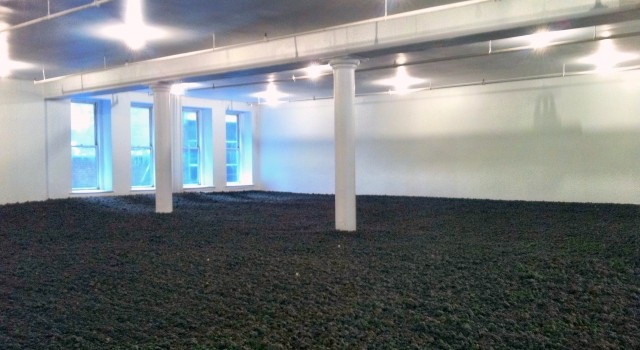
The scent of damp, musky earth filled the air as I climbed up the stairs to the second floor of building number 141 on Wooster Street. I had come to see Walter De Maria’s 1977 art installation, The New York Earth Room. For the last 35 years, this spacious Soho loft—no doubt one of the most expensive pieces of real estate in New York City—has been home to 280,000 pounds of soil, spread out over 3,600 square feet. De Maria’s piece is really nothing more than a large pile of dirt, but it is surprisingly moving. Soil is a rare commodity in this concrete jungle we call home, and an apartment building in Soho—nestled among stores like The North Face and Diane Von Furstenberg—is pretty much the last place you’d expect to find it.
The soil in Walter De Maria’s Earth Room has never been removed or replaced; it is the same earth that the artist installed 35 years ago. A caretaker waters the soil once a week to keep it moist. It used to need weeding, too, but after 35 years the soil is finally barren. The piece was originally designed as a temporary exhibit, scheduled to close after three months, but it has been commissioned and maintained by the Dia Art Foundation. The The Broken Kilometer a second work of art by De Maria, is housed at 393 West Broadway, roughly three blocks south of The New York Earth Room. De Maria is best known for The Lightning Field, a work of land art in New Mexico. The piece consists of a series of stainless steel rods that change their appearance according to the time of day and weather, lighting up brilliantly during thunderstorms.
The New York Earth Room is located at 141 Wooster Street, Apartment 2B, between Prince and West Houston. The closest subway stop is Spring Street (C/E). The artwork is open to the public on Wednesday through Sunday, from 12 to 6pm (closed between 3 and 3:30pm). It is closed for the months of July and August.





